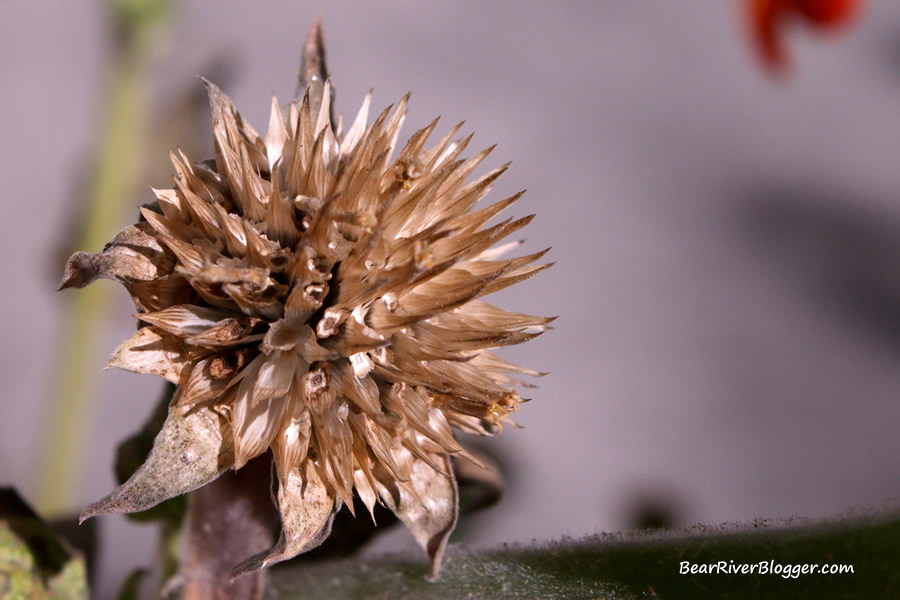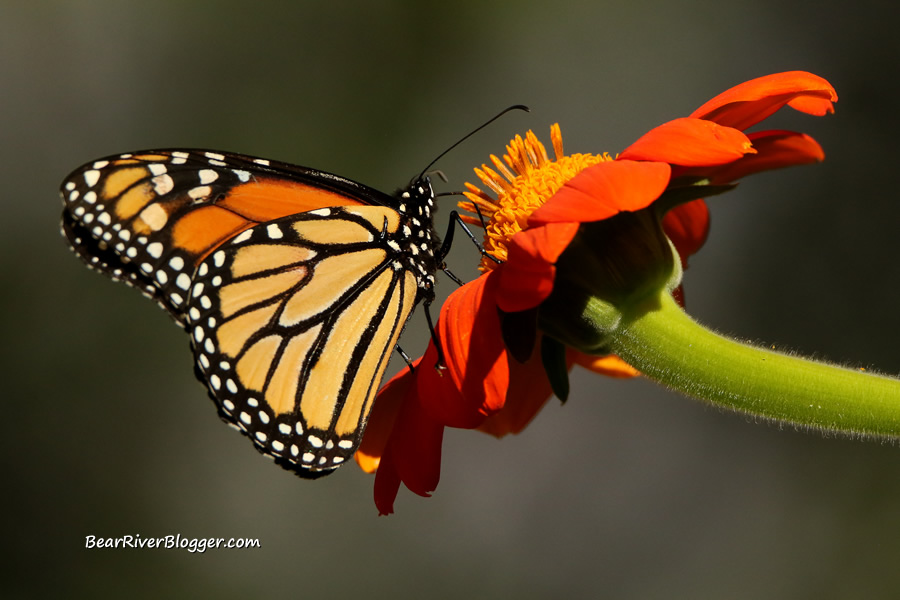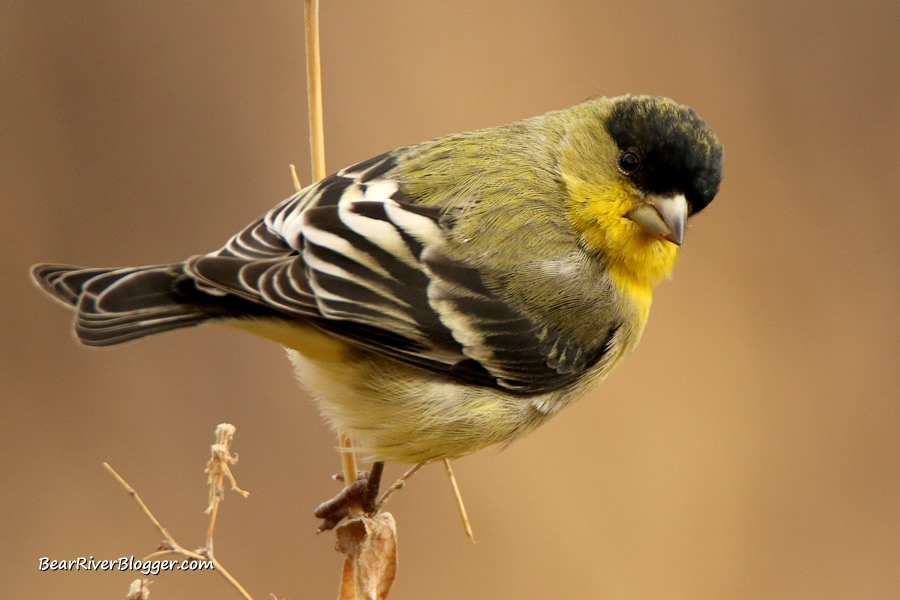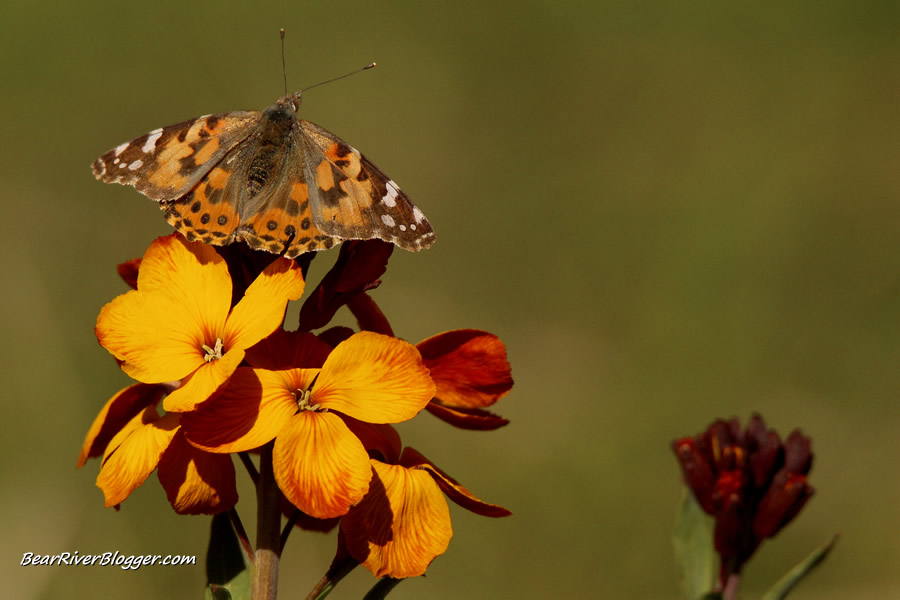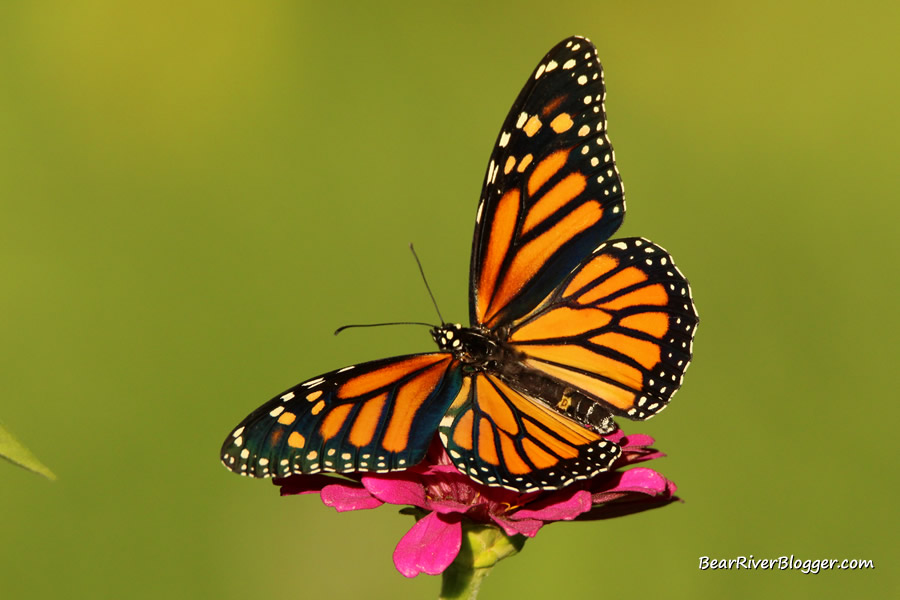Spend any amount of time online searching for information on bird and butterfly-friendly plants and you will most definitely come across the Mexican sunflower.
But what exactly is a Mexican sunflower and why should we be planting it?
The Mexican sunflower, otherwise known as Tithonia rotundifolia, isn’t actually a sunflower, per se, but part of the daisy family.
It has been referred to as a drought-tolerant warm-season annual that is vigorous and easy to grow. It is also a very beautiful addition to any garden and it will attract and feed birds and butterflies when it blooms.
I can personally attest to trying the Mexican sunflower in one’s own garden as I started growing them last year for the first time and, surprisingly, I had great success with these brightly colored beauties.
Admittedly, I am a novice gardener at best but they are super easy to grow and the bright colored blooms livened up my yard for sure.
I will most definitely be planting the Tithonia rotundifolia again in my garden this coming spring and I will be increasing the plot size as well.
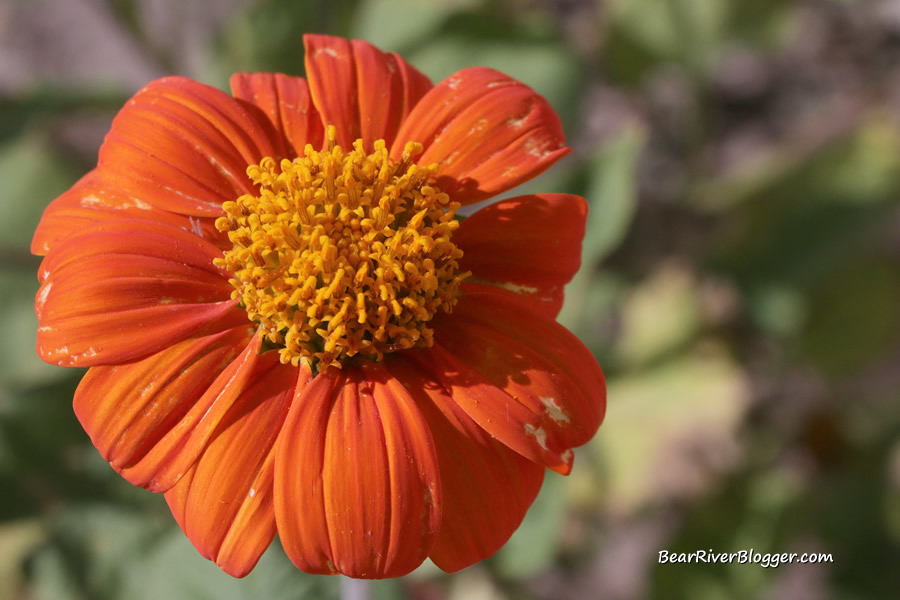
Not being a very skilled gardener myself, I wasn’t sure what to expect but I had read a lot about the Tithonia rotundifolia as a very beneficial plant in a nature garden so I decided to give it a try.
I didn’t do anything special while planting. I just turned over some of my lawn with a shovel, raked it smooth, and gently placed seeds a few inches apart from each other just under the soils’ surface to keep them from getting eaten by birds.
I watered them a couple times per week by hand with a hose and let nature do the rest. They took a little longer to germinate than the rest of my plants but once the Mexican sunflowers emerged from the ground it didn’t take long for them to grow to nearly six feet in height.
Do Hummingbirds Like Mexican Sunflowers?
One of the reasons I have decided to plant a garden is to attract and feed more hummingbirds in my yard.
I put out a feeder every year but I also wanted to add a more natural option for hummingbirds to feed upon and maybe someday completely replace the commercial feeder with a large bird garden.
After an extensive online search for plants suitable for hummingbirds, I decided to give the Mexican sunflower a try despite being a little hesitant at first.
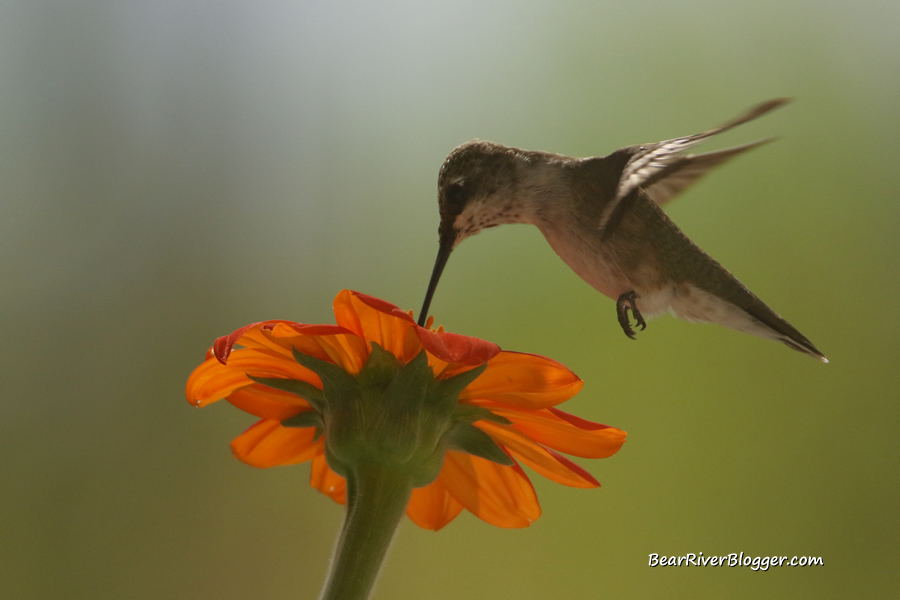
Most websites I had found on the subject were either seed manufacturers or large gardening sites selling products so I wasn’t sure if they were just trying to sell me seeds or if the Tithonia rotundifolia really does attract and feed hummingbirds but it looked like an easy plant to grow for a novice gardener so I decided to plant a few seeds and see what happens.
After the plants bloomed, I was pleasantly surprised.
Hummingbirds were highly attracted to and quite liked the Mexican sunflower.
In fact, not knowing what to expect, I placed a hummingbird feeder nearby as an alternative food source but the hummingbirds showed very little interest in the sugar water and spent most of their time going from bloom to bloom in search of nectar.
I can confidently say from my own experience, hummingbirds are very much so attracted to the Mexican sunflower and I would suggest it to anyone looking to add a bright colored plant in their garden which also feeds hummingbirds.
Do Butterflies Like Mexican Sunflowers?
Like a lot of people who love butterflies, I am trying to help the monarch and other butterflies in my area with a nature-oriented type of garden.
I do have a good crop of milkweed established but my yard is lacking quite a bit in nectar-producing plants.
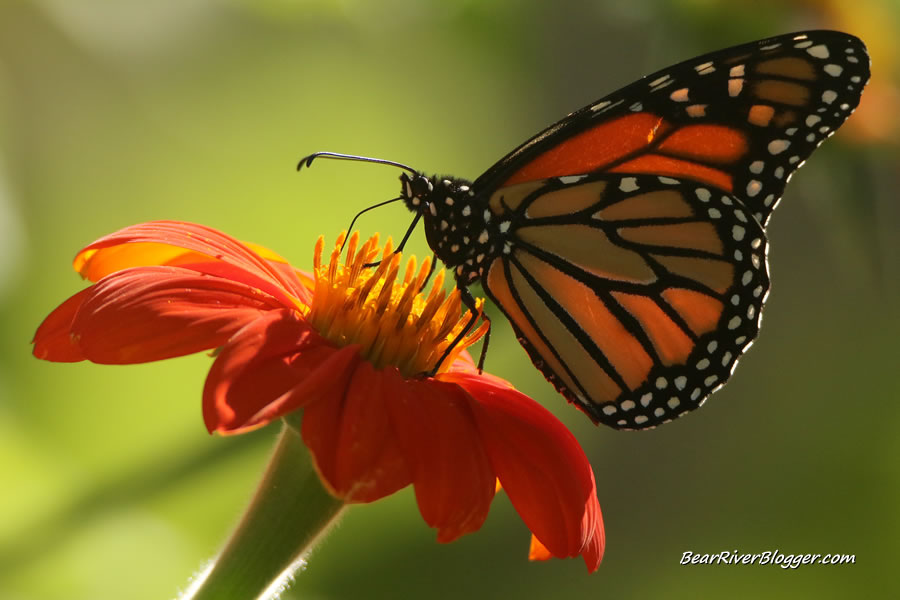
I had read online the Mexican sunflower was a good flower for butterflies to nectar upon so it helped in my decision to give this well-known plant a try in my own yard.
My yard gets a good number of butterflies each summer so this should be a good test.
By the time my Mexican sunflowers started to bloom, however, most of the butterfly action had subsided for the year, especially the beautiful western tiger swallowtails which frequent my yard.
Painted lady and monarch butterflies were the only known species I was observing once I had bright orange blooms available to nectar upon.
I only observed monarch butterflies on the Mexican sunflowers but they were a consistent and frequent visitor to my patch.
It seemed the blooms came out just in time for the monarch migration so my sunflowers were attracting monarchs throughout the day for a couple weeks as new blooms were appearing regularly.
I was very happy to see so many monarch butterflies using my Mexican sunflowers but at the same time, I was a little disappointed they bloomed too late for other butterflies to utilize them.
Nevertheless, this plant will be a yearly addition to my garden. I will just have to work on finding earlier blooming plants for the swallowtail butterflies in my yard.
Are Mexican Sunflowers Annuals Or Perennials?
The Mexican sunflower is an annual, meaning you will have to plant it each year. It is easily grown from seeds and can also be grown in pots from what I learned from experience this past summer.

One online source I found stated they will reseed themselves in zones 5 through 10. Here in northern Utah, I am on the border between zones 4 and 5 and I have had a few Mexican sunflowers reseed themselves from the previous year.
Will Birds Eat Mexican Sunflower Seeds?
This was one of my biggest questions regarding the Mexican sunflower. More than anything else, I want to attract more songbirds to my yard.
I found very little definitive information online regarding songbirds eating the seeds so I wasn’t sure what to expect.
I get numerous American goldfinches in my yard year-round and I was anxious to see if they would partake of the seeds.
Well, to be honest, I didn’t get many birds feeding on my Mexican sunflower seeds.
Very few birds, in fact, did I observe harvesting seeds but, in all fairness, my patch of Tithonia rotundifolia was surrounded by a large plot of a variety of regular sunflowers, some nearly 11 feet tall with numerous seed-bearing blooms so I think there was too much food available to get an accurate and fair assessment.
Either way, the Mexican sunflowers are in my yard to stay. I hope they are a good seed source for goldfinches and other songbirds but if they aren’t, I will still be planting them each summer for hummingbirds and butterflies as well as the vibrant color they show.
Conclusion
Well, my first year planting the Tithonia rotundifolia had mixed success but overall I was pleasantly surprised and very happy with them as a whole.
I started them from seeds sown directly into the earth and they were very easy to grow, especially for this novice gardener.
The hummingbirds and monarch butterflies loved them but the blooms were a bit too late in the year for the other varieties of butterflies I tend to see each summer.
Overall, I am now a huge fan of the Mexican sunflower and it will be an annual addition to my ever-growing nature garden. I hope my experience with the Mexican sunflower has helped someone else in deciding to plant them in their own yard. Easy to grow and they benefit butterflies and hummingbirds, what could be better?
Feel free to subscribe to my blog on the subscribe page. I photograph and write about my experiences with nature, both in my yard and in the world around us, including the famed Bear River Migratory Bird Refuge.
Nature and photography are my passions and I hope you enjoy my efforts as much as I enjoy capturing and writing about them.
More mexican sunflower images.


